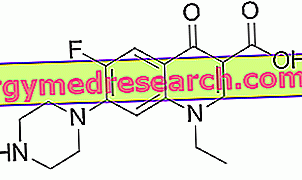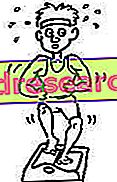Dietary fibers are unavailable plant polysaccharides, since the human organism is not able to digest them, let alone absorb them.

There are commonly two types of dietary fiber, soluble and water-insoluble.
The insoluble fibers
The insoluble fibers (cellulose, hemicellulose, lignin *), have the ability to incorporate a considerable amount of water. Thanks to this precious feature, they perform different and important functions:
they increase the volume and weight of the stools and, consequently, accelerate intestinal motility by shortening the transit time of the fecal material. Thanks to this peculiarity, insoluble fibers correct constipation, prevent diverticulosis and reduce, among other things, the risk of colon cancer.
(*) For the sake of precision, lignin is not a polysaccharide and as such, unlike other fibers, it does not belong to the world of carbohydrates.
Soluble fibers
Soluble fibers (pectins, gums, mucilages) form a gelatinous mass with water that:
it has satiating power, as it relaxes the gastric walls, stimulating the mechanoreceptors responsible for transmitting the sense of satiety to the brain;
reduces intestinal absorption of digestion products, taking them away from the body. For this reason, dietary fibers are indicated in slimming diets and in diabetes diet therapy (they reduce the absorption of sugars) and hyperlipidemias (they reduce fat and cholesterol absorption). The water-soluble fibers are therefore useful in the prevention of cardiovascular diseases and gallbladder stones.
How much fiber do you take?
A daily consumption of 20-35 g of fiber is recommended, with an insoluble / soluble ratio of 3: 1
It is advisable not to exceed these values, in order not to excessively hinder the absorption of precious micronutrients for the well-being of the organism (iron, calcium and zinc).
It is also recommended to:
favor the fibers contained in food: it is therefore advisable to obtain your daily ration directly from food. In this way it will be possible to benefit from the synergic effect exercised by the various micronutrients present in the dishes. The economic issue should not be underestimated either, since fiber supplements have a significant cost.
If you decide to increase the fiber content of your diet it is good to do it gradually, in order to avoid the onset of gastrointestinal problems (meteorism, diarrhea, flatulence, etc.).
The fibers must be taken together with a lot of water, since, as we have seen, all their interesting features are linked to the ability to absorb and retain liquids; if these are scarce, the beneficial effects sought are considerably reduced and, in some cases, there is a risk of obtaining an opt-out effect.
Avoid taking the fibers together with drugs, as they can interfere with the intestinal absorption of the various active principles.
Finally, it is very important to relate the fiber content to the food's calories, thus avoiding the introduction of an excess of calories. In order to take on many fibers it is possible to introduce more calories than necessary.
For this reason the following parameter was introduced:
Fiber index (IF) = (FIB / CAL) x 100
Let's look at an example to clarify the ideas about this:
| CALORIE (100 g) | FIBER (100 g) | INDEX OF FIBER | |
| Chicory | 10 Kcal | 3.6 g | 36 |
| All Bran | 275 Kcal | 29.3 g | 10, 65 |
To take 20 g of fiber are therefore necessary:
555 g of chicory (only 55 Kcal)
or:
68 g of All Bran (well 187 Kcal)
In conclusion, those who want to lose weight must obtain fiber mainly from vegetables, rather than resorting to immoderate consumption of corn flakes.
CONTINUE: Foods richer in fiber »



